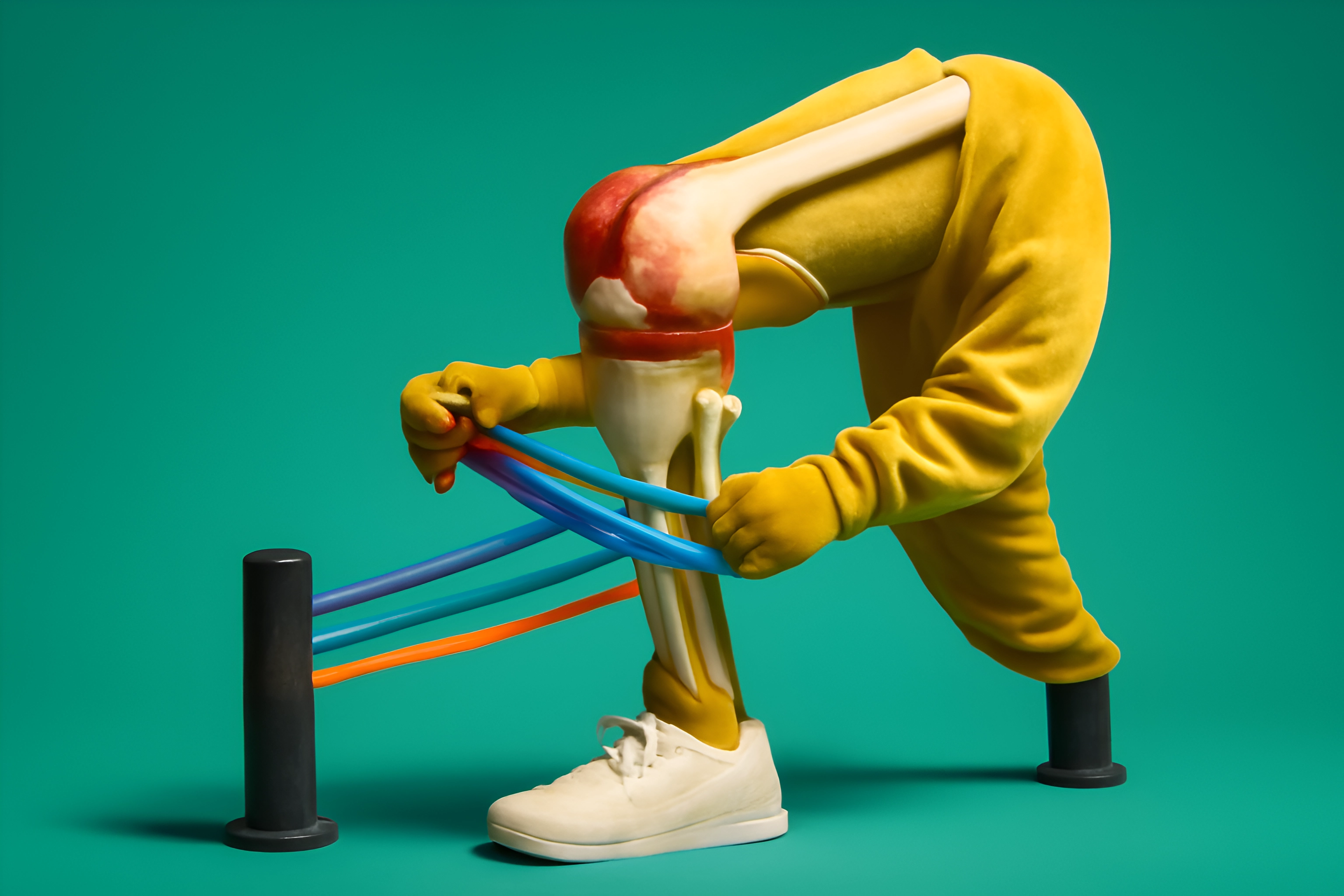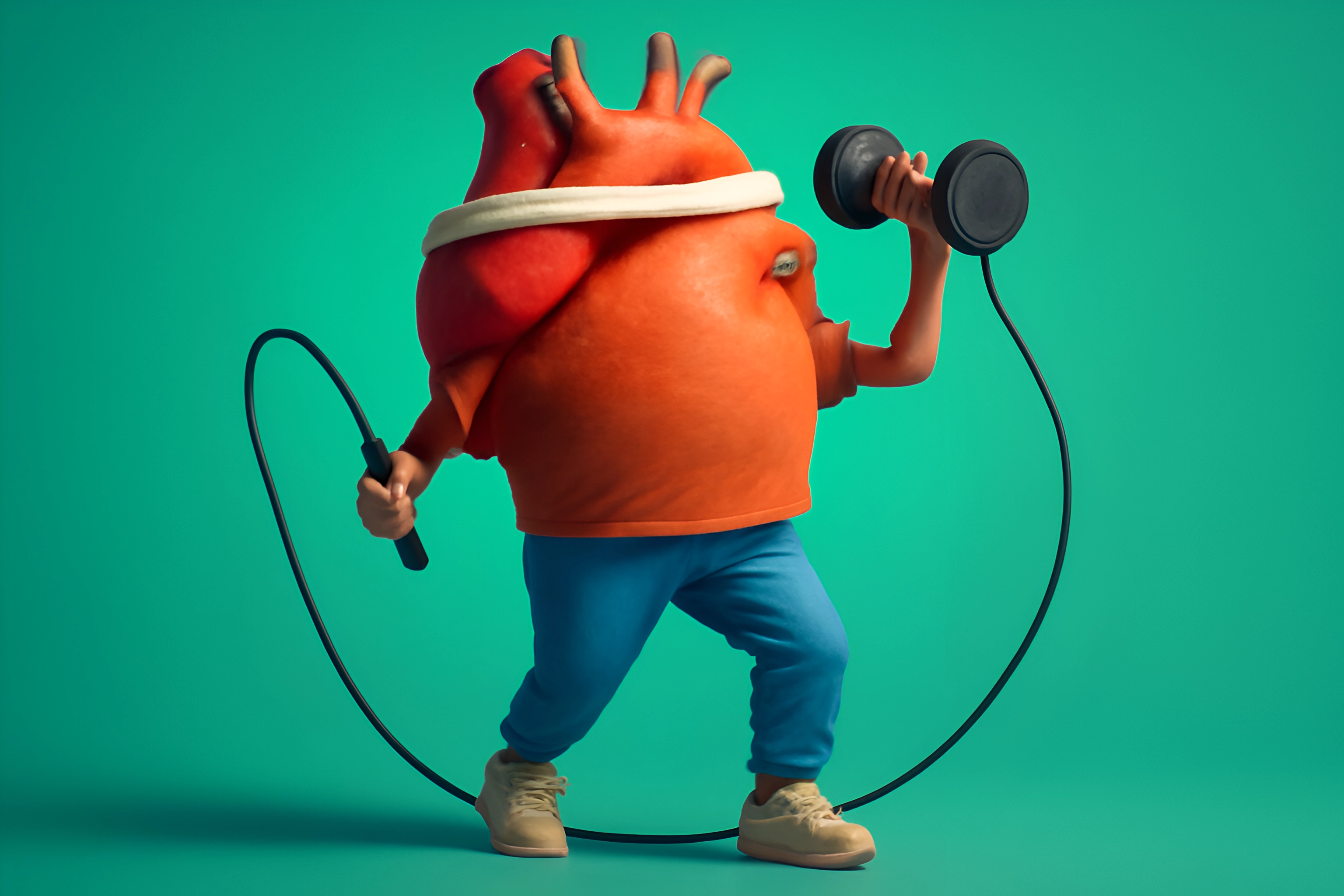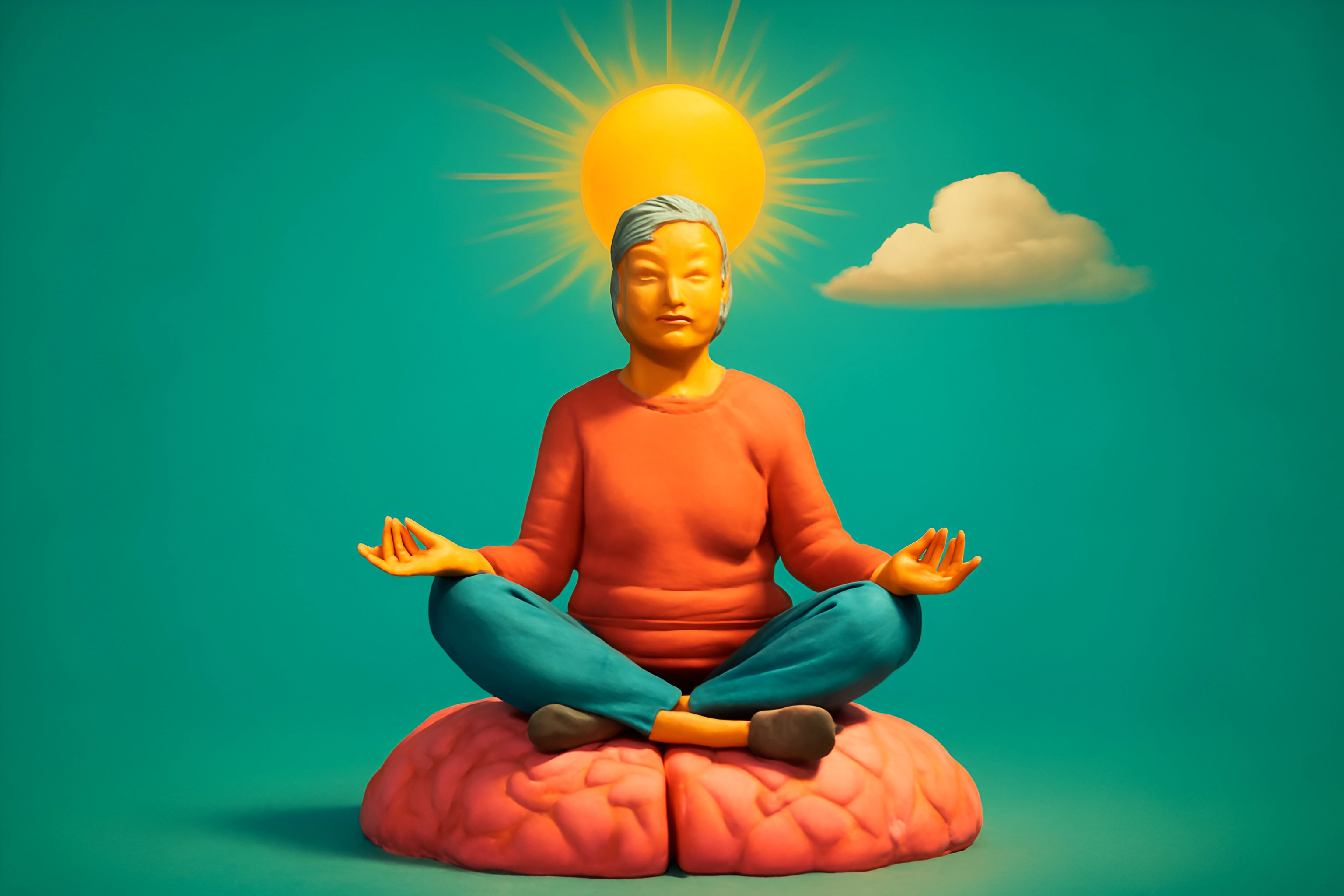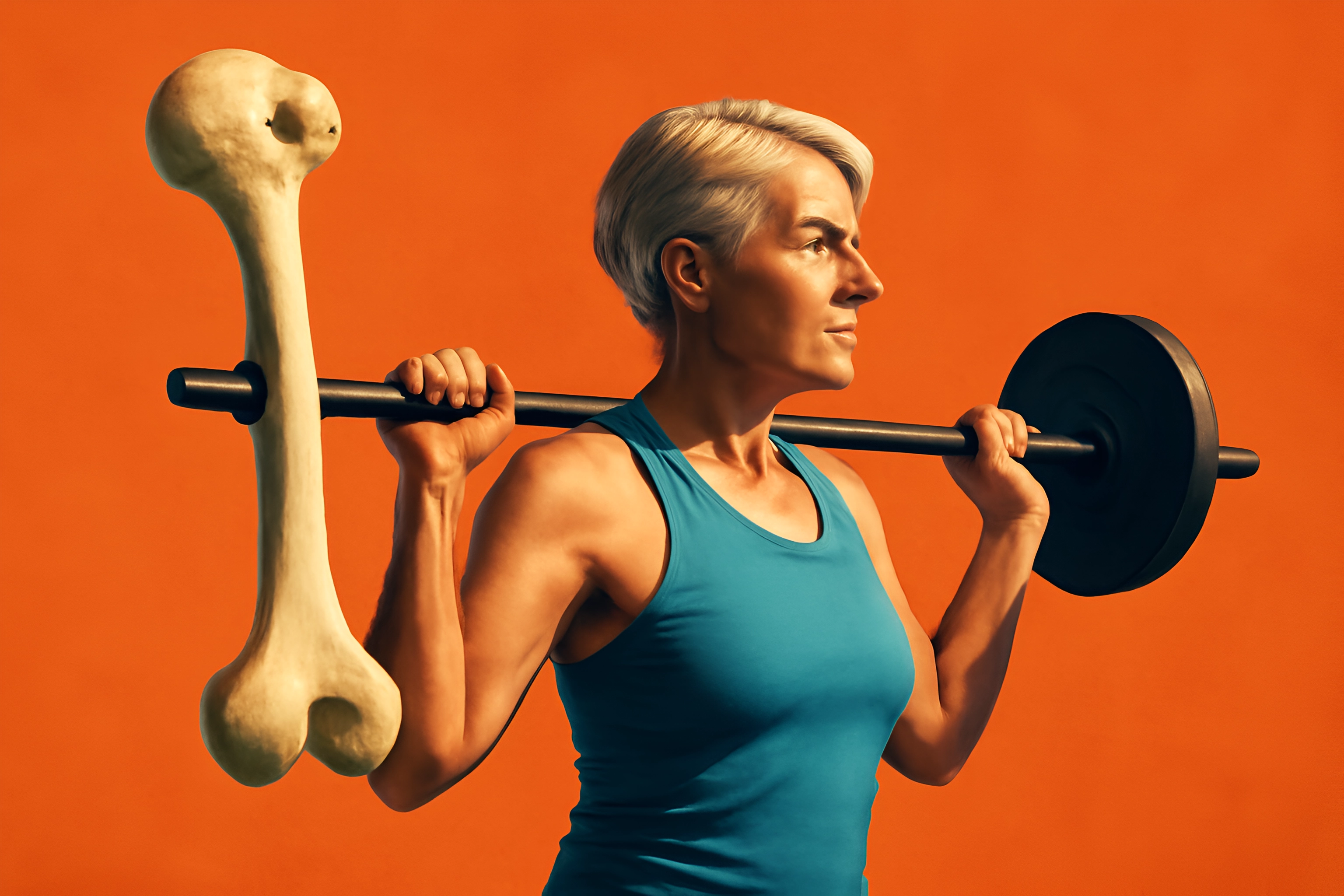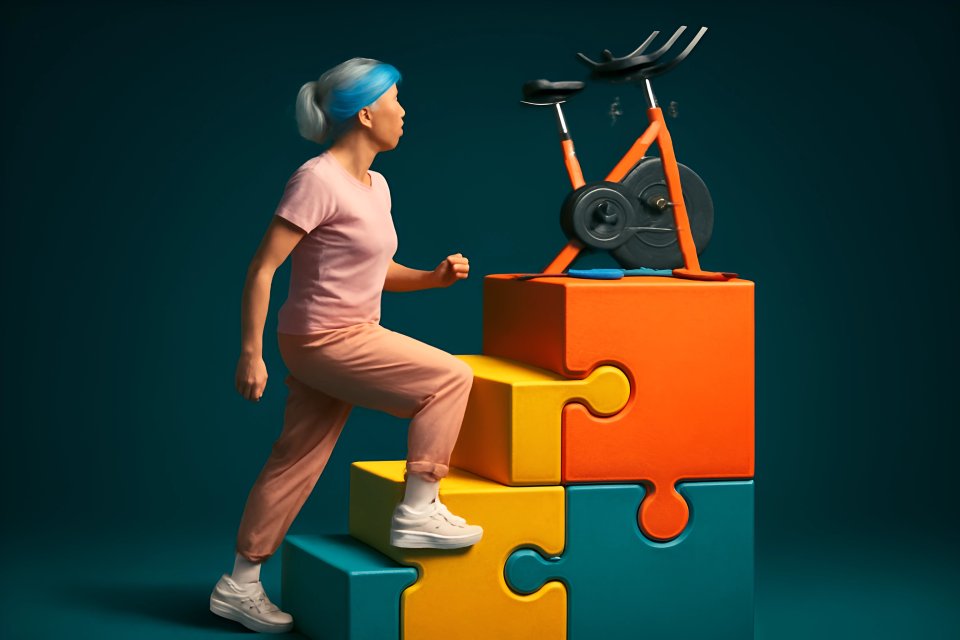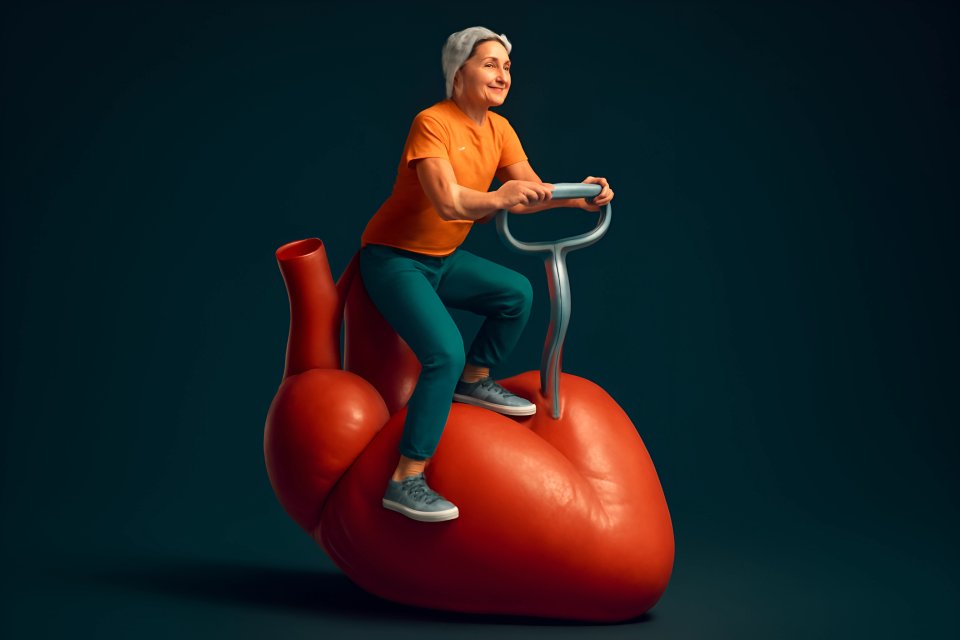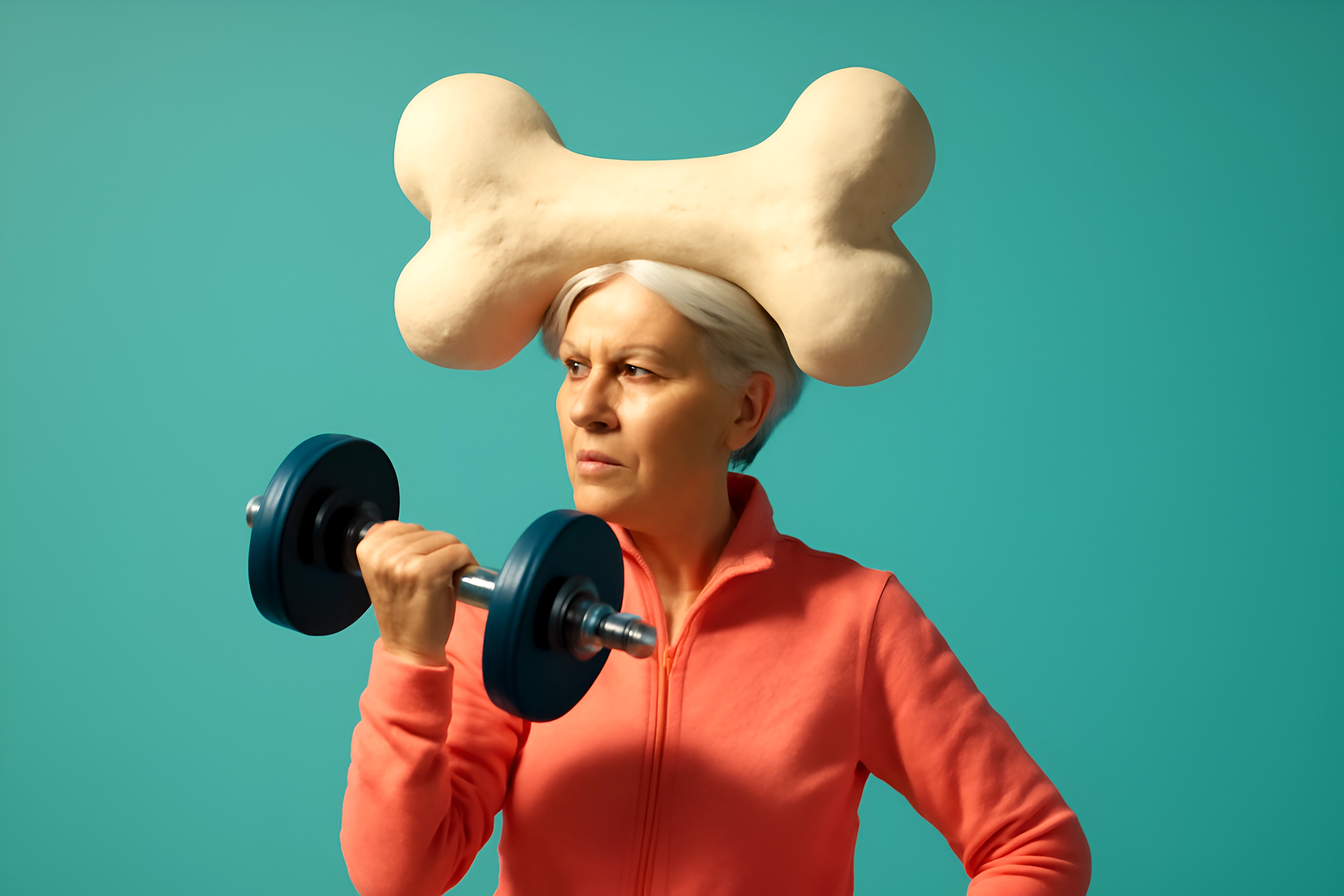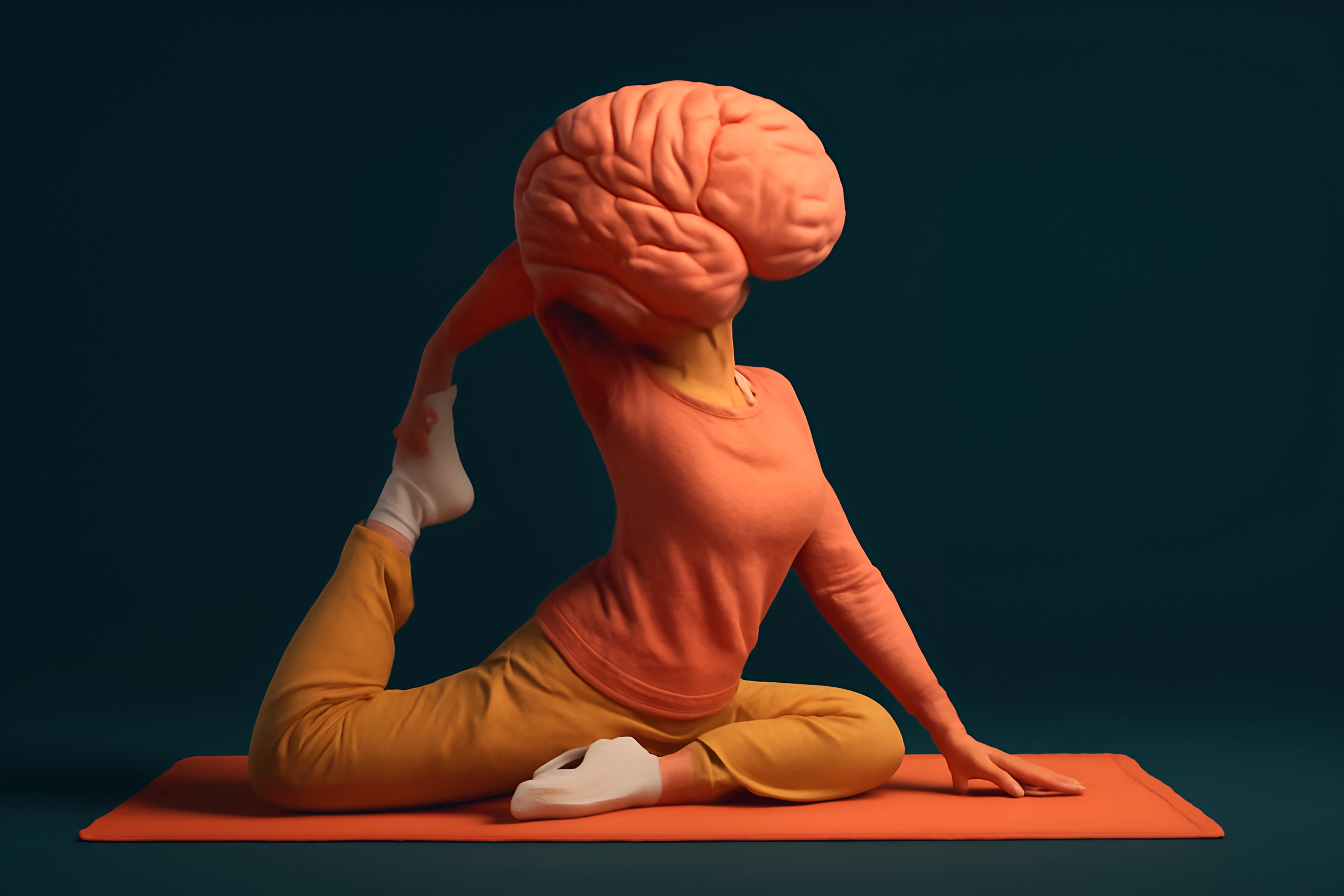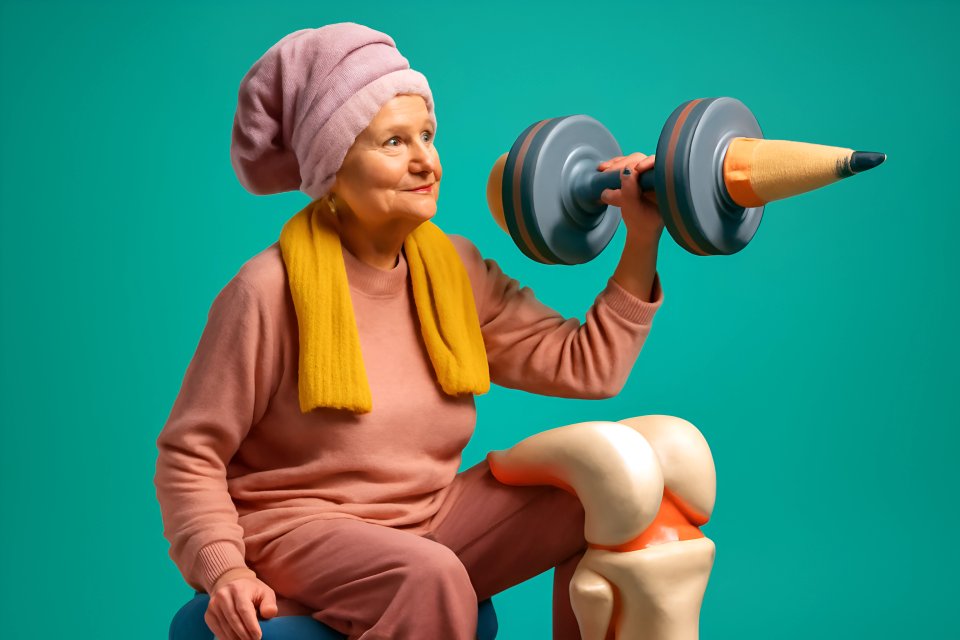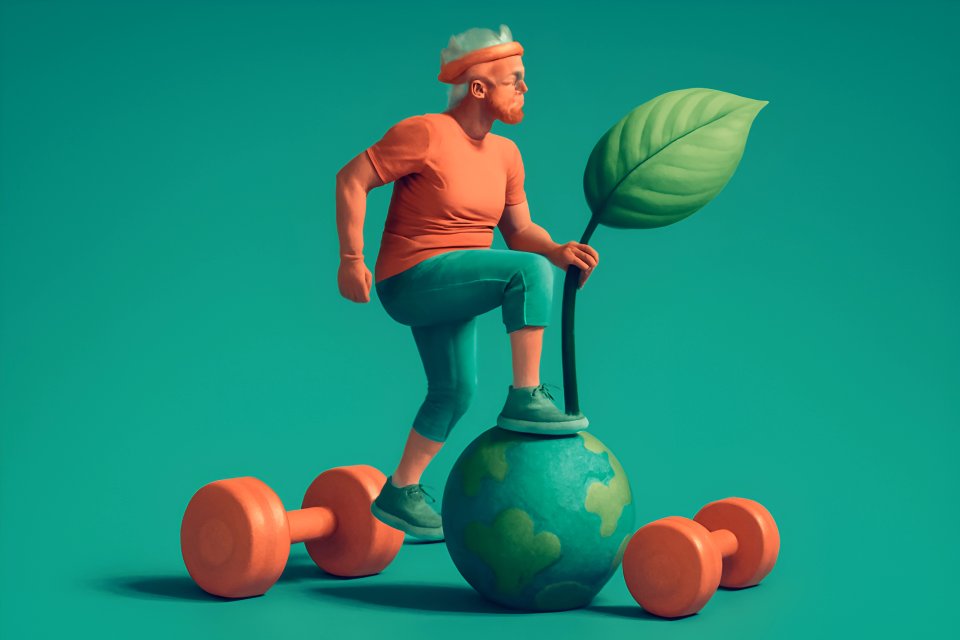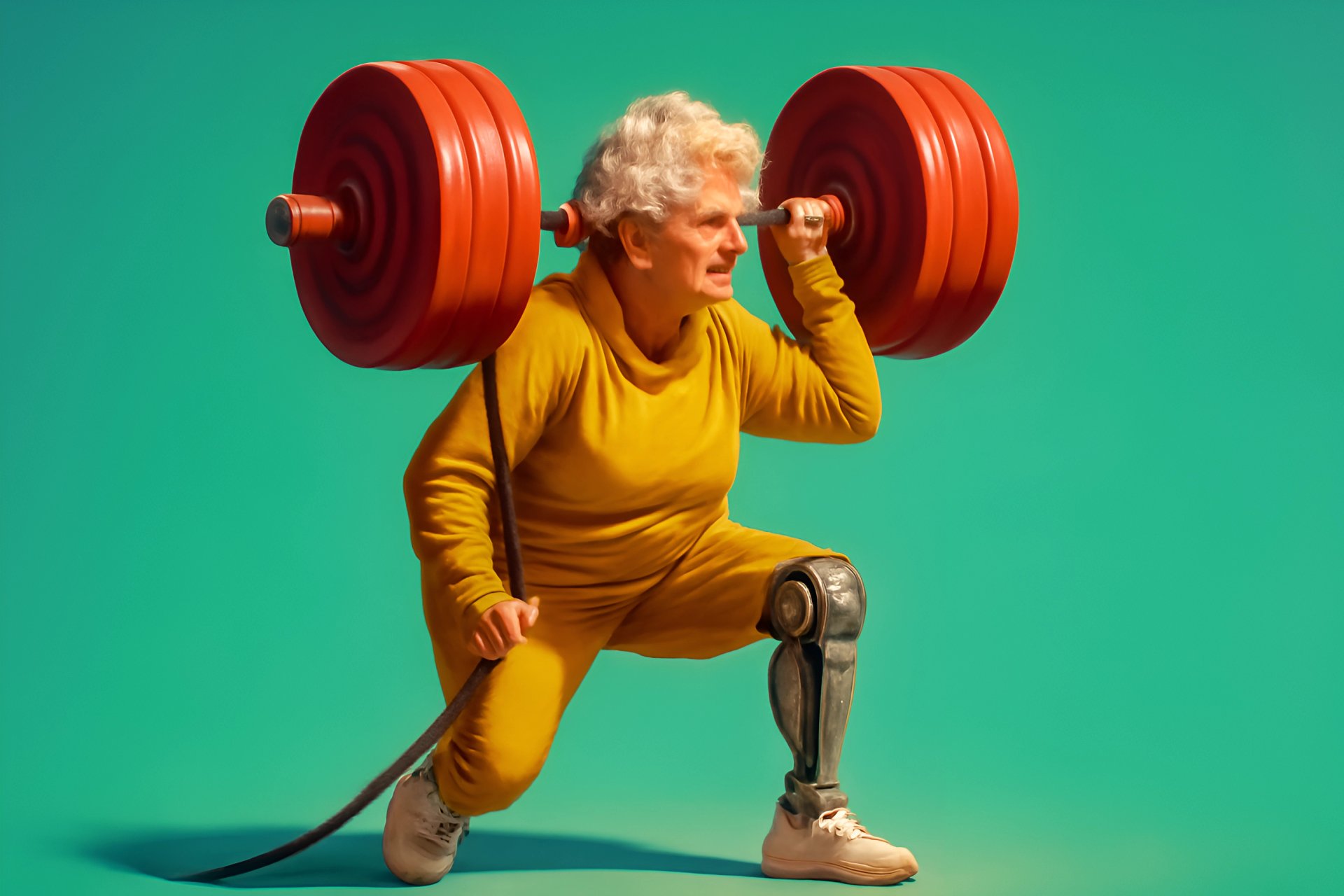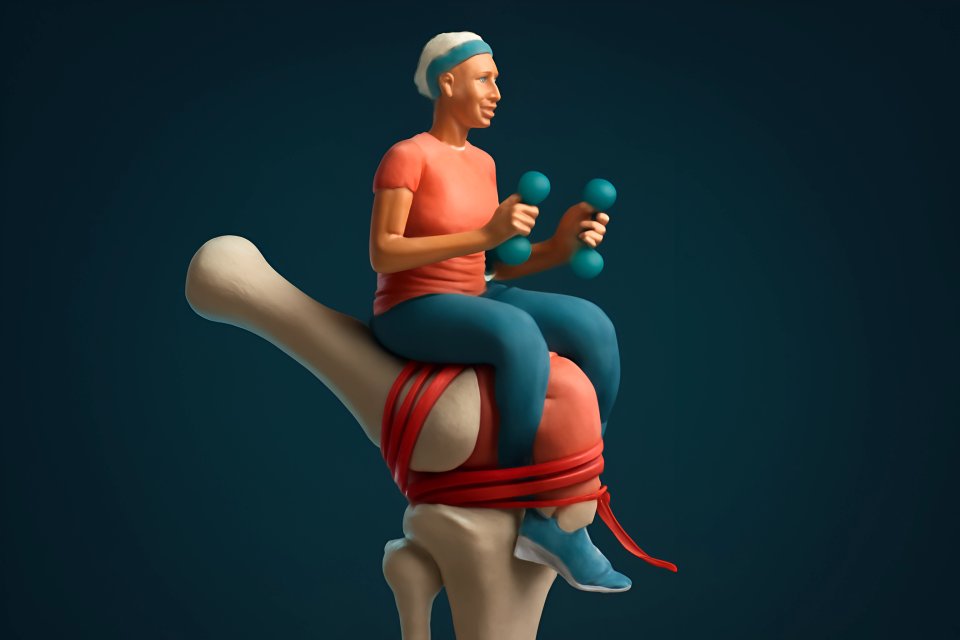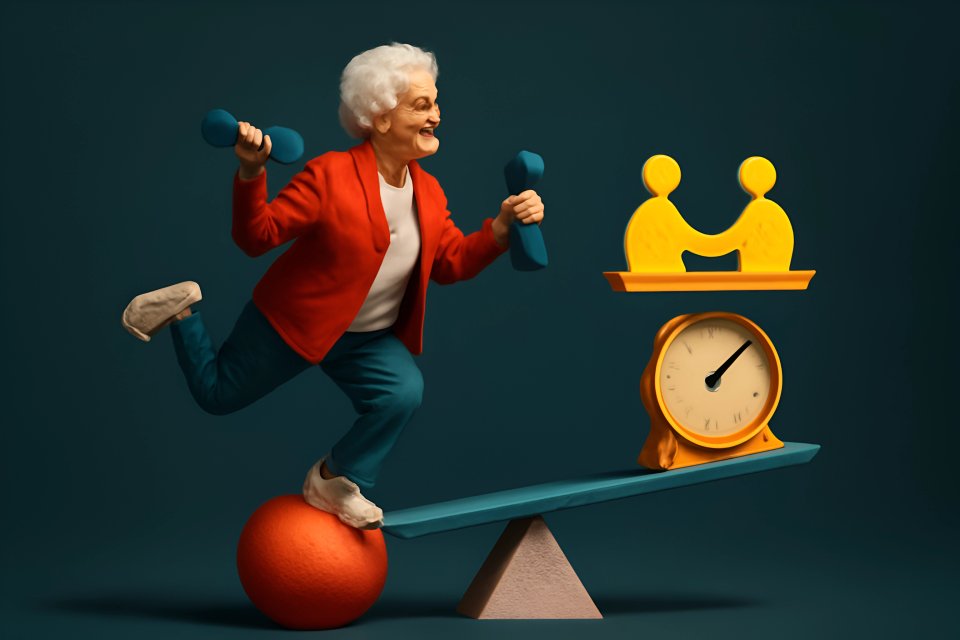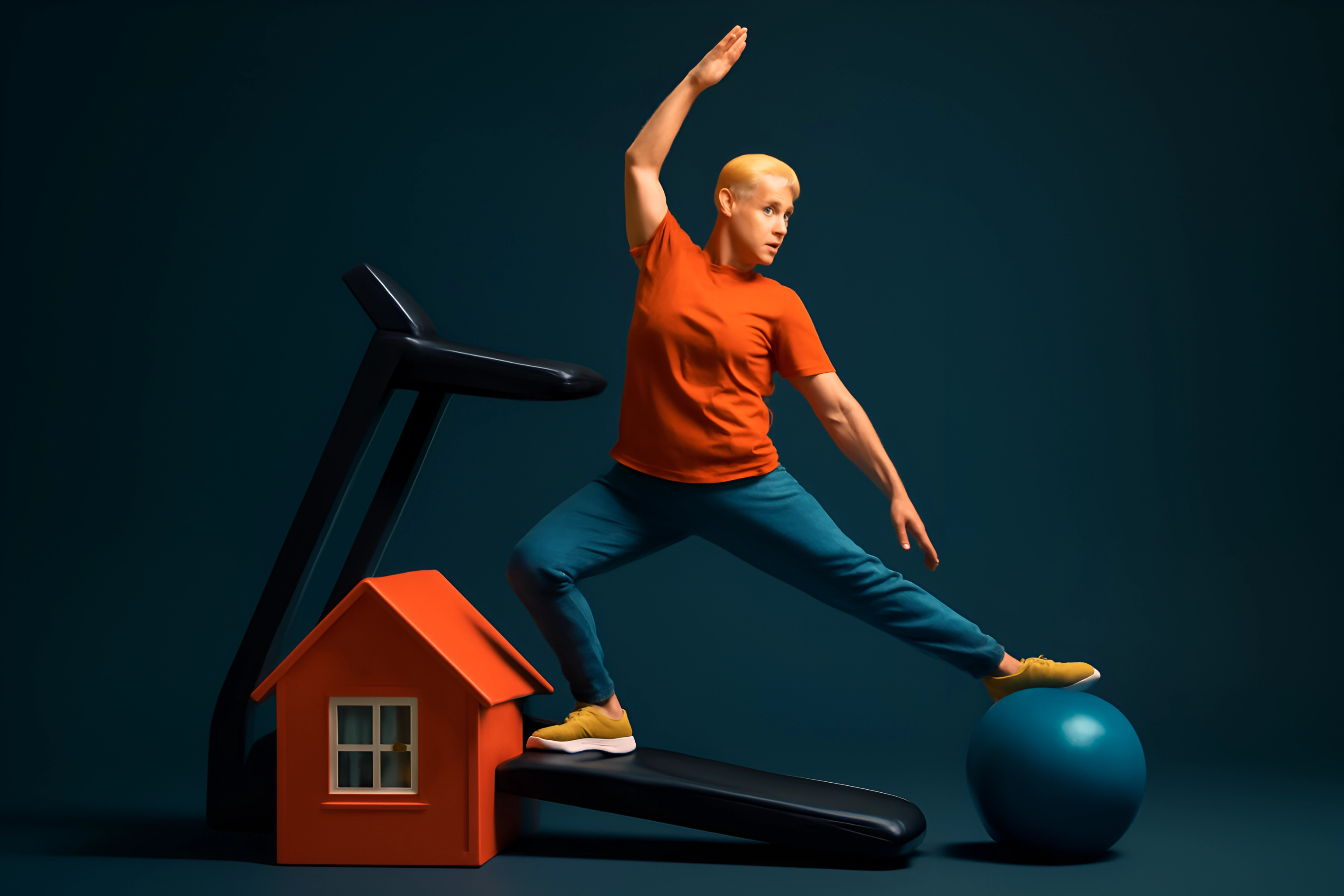
Does the thought of a simple misstep on the stairs make you nervous? Or do you feel that familiar morning stiffness that takes just a little longer to shake off each year? You are not alone, and more importantly, you have the absolute power to change it.
The truth is, our bodies change after 50. But this isn't a story about decline. It's a story about focus—about shifting our attention to the very foundation of our movement: flexibility and balance. This is where we reclaim our confidence and secure our independence for the vibrant years ahead.
This post is your personal guide to simple, yet profoundly effective, at-home routines. We’ll move beyond the basic toe touches you learned in gym class to introduce dynamic movements and stability exercises that are safe, powerful, and can be adapted to your current fitness level. Let's build a stronger, more stable foundation together, starting today.
Why Stretching and Balance are Your Superpowers After 50
Let's be brutally honest. This isn't just about being "flexible" enough to touch your toes. This is about the freedom to live your life without fear, the strength to play with your grandkids on the floor, and the vitality to say "yes" to new adventures. This is about functional fitness for a life lived to the fullest.
As we age, our flexibility can decrease by up to 50%, leading to that all-too-familiar stiffness and soreness. But a consistent stretching practice is your secret weapon against this. It's the key to unlocking a body that moves with ease and grace, turning daily activities from chores into simple pleasures.
Think of stretching and balance as the twin pillars supporting your independence. They are the fundamental skills that allow you to live confidently in your own home, reduce your risk of injury, and maintain the active lifestyle you deserve. The benefits are not just physical; they are the bedrock of your security and peace of mind.
- Enhanced Balance & Fall Prevention: This is your number one defense. Better stability directly reduces the risk of a life-altering fall, boosting your confidence with every step you take.
- Improved Flexibility & Reduced Stiffness: Make daily life easier. Tying your shoes, reaching for that top-shelf item, or getting out of a low chair becomes effortless and pain-free.
- Increased Circulation & Reduced Pain: Gentle movement is like medicine for your body. It can significantly alleviate aches in joints and muscles, especially for those managing arthritis.
- Maintained Independence & Vitality: This is the ultimate prize. Staying active, mobile, and self-sufficient is the key to thriving in your 50s, 60s, and beyond.
Getting Started: Your Safety-First Checklist
Before you take a single step, let's make a pact. Your safety is everything. These exercises are designed to build you up, not set you back, so treating your body with respect is the most important rule of all.
The golden rule is simple: Listen to your body. A good stretch should feel like a gentle release, never a sharp or shooting pain. If you feel pain, ease back immediately. Your goal is progress, not perfection, and pushing too hard is the fastest way to get sidelined.
Prepare your environment for success. Find a clear, open space free of clutter, rugs, or anything else you could trip over. And make sure your support system is in place—have a sturdy chair, a countertop, or a wall within arm's reach for every single balance exercise. Remember, using support isn't a sign of weakness; it's a sign of intelligence.
The Innovative Stretching Routine: Dynamic & Static Stretches for Full-Body Flexibility
Forget the old, boring stretches. This routine is designed to restore mobility where you need it most, using dynamic movements that wake up your body and static holds that release deep-seated tension. This is your first step toward a more limber, pain-free you.
Seated Cat-Cow
What it helps:
This gentle movement mobilizes the spine, easing lower back stiffness and promoting better posture. It's the perfect way to wake up your core from the safety of a chair.
Step-by-Step Instructions:
Sit tall at the edge of a sturdy chair with your feet flat on the floor. Place your hands on your knees. On an inhale, arch your back, press your chest forward, and look up toward the ceiling (Cow). On an exhale, round your spine, tuck your chin to your chest, and gently pull your navel in (Cat). Repeat this fluid motion 5-8 times.
Modification-Rich Tip:
If the full movement feels like too much, simply reduce the range of motion. Even a small, gentle arch and round is incredibly beneficial for your spinal health.
Doorway Chest Opener
What it helps:
This is the ultimate antidote to a day spent slouching over a computer or phone. It opens up the chest and shoulders, improves posture, and makes breathing feel deeper and easier.
Step-by-Step Instructions:
Stand in an open doorway. Place your forearms on the doorframe with your elbows bent at a 90-degree angle, just below shoulder height. Step forward with one foot until you feel a gentle stretch across your chest. Hold for 20-30 seconds, breathing deeply.
Modification-Rich Tip:
To lessen the intensity, simply take a smaller step forward or place your hands lower on the doorframe. You control the stretch completely.
Seated Figure-Four Stretch
What it helps:
This powerhouse stretch targets the tight muscles in your hips and glutes, which can be a major contributor to lower back pain and sciatica. It's a fantastic alternative to floor stretches.
Step-by-Step Instructions:
Sit tall on your chair. Cross your right ankle over your left knee, keeping your right foot flexed to protect the knee. If this is enough of a stretch, stay here. To deepen it, gently press down on your right knee or hinge forward from your hips with a straight back. Hold for 30 seconds and switch sides.
Modification-Rich Tip:
If placing your ankle on your knee is too difficult, place a low stool in front of you and rest your ankle on that instead. This provides the same great hip-opening benefit with less strain.
Standing Hamstring Stretch with Chair Support
What it helps:
Tight hamstrings pull on the lower back and can limit your mobility. This supported stretch safely lengthens them without requiring you to bend over and strain your back.
Step-by-Step Instructions:
Stand facing a sturdy chair. Place the heel of your right foot on the seat of the chair, keeping your leg as straight as comfortable. With your hands on your hips and your back straight, hinge forward from your hips until you feel a stretch in the back of your right thigh. Hold for 30 seconds, then switch legs.
Modification-Rich Tip:
Don't lean forward as far, or place your foot on a lower surface like a stair step. The goal is to feel a gentle pull, not force it.
The Foundational Balance Routine: Building Stability One Step at a Time
Confidence in your movement starts with a stable foundation. According to the CDC, one in four older adults reports falling each year, but you can dramatically lower your risk. This routine challenges your stability in a safe, progressive way, rewiring your brain and body for better balance.
Heel-to-Toe Walk (with Wall Support)
What it helps:
This exercise, also known as a tandem walk, improves your dynamic balance—the kind you use every day while walking. It trains your body to maintain stability while in motion.
Step-by-Step Instructions:
Stand alongside a wall or long countertop, placing one hand on it for support. Take a step forward by placing the heel of one foot directly in front of the toes of the other, as if walking on a tightrope. Look forward, not down at your feet. Take 10-15 steps, then turn around and repeat.
Modification-Rich Tip:
Keep your hand on the wall for the entire duration. As you get more confident, you can progress to lightly touching the wall with just your fingertips, and eventually, not at all.
Single-Leg Stance with "Taps"
What it helps:
This classic balance exercise gets an innovative twist. The "taps" add a dynamic challenge that forces your standing leg and core to make constant micro-adjustments, rapidly improving your stability.
Step-by-Step Instructions:
Stand next to a chair, holding on for support. Shift your weight onto your left leg and lift your right foot just off the floor. Keeping your balance, gently tap your right toes forward, then back to center. Tap to the side, then back to center. Finally, tap behind you, and return to center. Perform 5-8 full sets of taps, then switch legs.
Modification-Rich Tip:
Instead of lifting your foot, keep your toe on the ground and simply slide it forward, to the side, and back. This keeps you connected to the floor while still challenging your balance.
The Clock Reach
What it helps:
Life requires you to be stable while reaching in different directions. This exercise trains that exact skill, improving your functional balance and coordination in a 360-degree range of motion.
Step-by-Step Instructions:
Stand on your left leg, holding a chair with your left hand. Imagine you are standing in the center of a large clock face. Keeping your standing knee slightly bent, reach your right arm toward 12 o'clock, then back to center. Reach toward 3 o'clock, then back. Finally, reach toward 6 o'clock. Repeat 3-5 times before switching legs.
Modification-Rich Tip:
Start with a very small reach and only go as far as you feel stable. You can also perform this exercise by reaching with your leg instead of your arm for a different challenge.
Sit-to-Stand (No Hands)
What it helps:
This is one of the most crucial functional exercises for maintaining independence. The strength to get up from a chair without using your hands is directly linked to leg strength and your ability to remain self-sufficient.
Step-by-Step Instructions:
Sit toward the front of a sturdy, armless chair with your feet flat on the floor, hip-width apart. Cross your arms over your chest. Lean forward slightly and, pressing through your heels, stand up to a fully upright position. Slowly and with control, reverse the motion to sit back down. Aim for 8-12 repetitions.
Modification-Rich Tip:
If you can't do it without hands yet, that's okay! Start by using your hands to push off the chair. To make it a bit easier, place a firm cushion on the chair to reduce the distance you have to travel.
Putting It All Together: Your 10-Minute Daily Mobility Flow
Knowledge is useless without action. The best way to see real results is with consistency. This simple, 10-minute flow combines the best of these exercises into a routine you can do every single day to feel looser, stronger, and more confident.
Commit to this short sequence, and you are making a powerful daily investment in your long-term health and freedom. Think of it not as a workout, but as your daily ritual for vitality. You can follow along with a similar standing routine for beginners and seniors to get started.
Here is a simple flow to get you started.
| Exercise | Duration / Reps |
|---|---|
| Warm-up: March in place | 1 minute |
| Stretch 1: Seated Cat-Cow | 5 full reps |
| Stretch 2: Doorway Chest Opener | 30 seconds |
| Balance 1: Single-Leg Stance with Taps | 30 seconds each leg |
| Balance 2: Sit-to-Stands | 5-8 reps |
| Cool-down Stretch: Seated Figure-Four | 30 seconds each side |
Frequently Asked Questions (FAQ)
It's natural to have questions as you begin a new routine. Here are answers to some of the most common ones we hear, designed to give you the confidence to get started safely.
How often should I do these routines?
Consistency is more important than intensity. Aim to perform this 10-minute flow at least 3-5 times per week. However, as experts from HT Physio often explain, even a few minutes of gentle stretching every single morning can make a world of difference in how you feel throughout the day.
What if I feel a little wobbly during the balance exercises?
That's completely normal! In fact, feeling wobbly means your body is being challenged and your stabilizing muscles are working hard to adapt. Hold onto your support firmly, reduce your range of motion, and focus on your breath. Every wobble is a sign you're getting stronger.
Can I do these stretches if I have arthritis?
Yes, in most cases, gentle stretching is highly recommended for managing arthritis symptoms as it helps lubricate the joints and reduce stiffness. The key is to always listen to your body, move slowly, and never push into pain. If you have specific concerns, it's always best to consult with your doctor or a physical therapist. For more ideas, you can explore our guide on customized flexibility and mobility routines for seniors.
Do I need any special equipment?
Absolutely not! That's the beauty of this program. All you need is a sturdy chair, a bit of open space, and a positive attitude. As you progress, you might consider adding support with items from our guide on at-home workout equipment for seniors on a budget.
Conclusion: Embrace Your Strength, One Stretch at a Time
You now hold the blueprint for a more confident, mobile, and independent future. Remember, every small, consistent effort you make is a powerful investment in your long-term health. This isn't about becoming a gymnast; it's about preserving your freedom and enhancing your quality of life.
Your 50s, 60s, and beyond are a time for thriving, not just surviving. By incorporating these simple routines, you're not just exercising; you are actively choosing a life of vitality, confidence, and boundless possibility. You are taking control.
So, what are you waiting for? The power to feel better is right here, right now. Which of these exercises are you most excited to try first? Share your thoughts in the comments below! For more expert tips and empowering routines delivered straight to your inbox, join the FitOverFifty community today.
